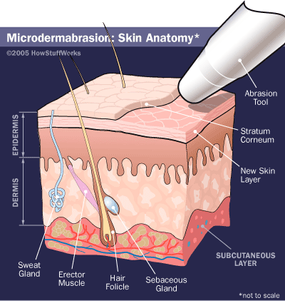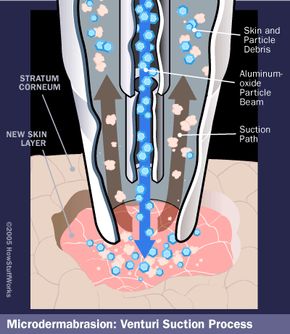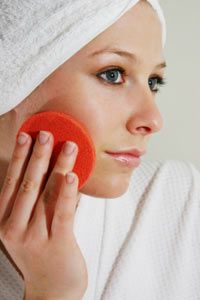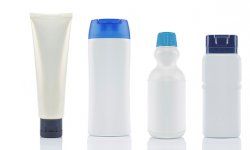
Microdermabrasion is one of the more recent skin-care techniques to have crossed over from Hollywood to the mainstream. It's being advanced as an "instant facelift" -- an effective alternative to costlier and more invasive procedures like plastic surgery, chemical peels and Botox injections. Recently, more and more men are trying it, instead of pursuing cosmetic surgery.
So what exactly is microdermabrasion, what does it promise and what effect does it actually have on your face? Do you need a doctor, or is it something you can do yourself? In this article, we'll look at the science behind microdermabrasion, see what a treatment is like and find out what it does to your skin.
Advertisement
The Basics
Microdermabrasion is a general term for the application of tiny rough grains to buff away the surface layer of skin. Many different products and treatments use this method, including medical procedures, salon treatments and creams and scrubs that you apply yourself at home. It's usually done to the face, chest, neck, arms or hands. Before we can understand how microdermabrasion does what it does, it's important to understand how skin works.
Your skin is made up of two main layers, the epidermis and the dermis. The epidermis is the layer closest to the outside world. It's a set of dead skin cells on top of another layer of cells that are in the process of maturing. The topmost layer is called the stratum corneum. The stratum corneum mostly acts as a barrier between the outside world and the lower skin layers. It keeps all but the smallest molecules from getting through.

When you put lotions or creams on your skin, some of the moisture passes through the stratum corneum, but not all of it. This layer is home to many minor skin imperfections like fine wrinkle lines and blemishes.
All of the action in microdermabrasion takes place at the level of the stratum corneum. Since it only really targets the epidermis (and not the dermis), it is more accurate to call it micro-epi-dermabrasion. Affecting deeper layers of skin would be painful and harmful, and it would risk permanently embedding the tiny grains into the skin.
Advertisement



